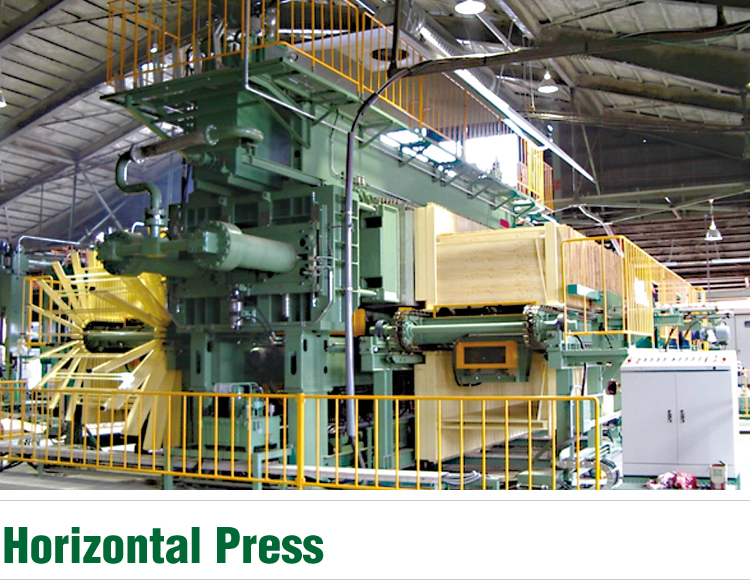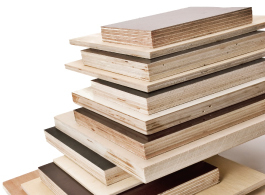
| Model P25-AB |
Horizontal Press P25-AB | |
| The Taihei 25-AB Horizontal Press is a hot press for laminating plywood after the gluing and prepressing processes. The horizontal press differs from conventional vertical presses in that the heat plates are installed vertically and apply pressure to the plywood horizontally. | ||
| Reducing plywood thickness reduction A downside to vertical presses is that there is a difference in contact pressure from the top of the press to the bottom of the press caused by the weight of the heat plates and plywood. With horizontal presses, this difference is negated as the heat plates are installed in the vertical press. This allows pressure to be applied uniformly which in turns means that the thickness reduction of the plywood can be reduced at a lower pressure. |
||
| Applying uniform pressure The horizontal press positions each piece of plywood in the center of the heat plate and allows the position of the main cylinder to be adjusted in order to maximize the uniformity of contact pressure. |
||
| Increasing production efficiency The horizontal press uses a different mechanism as compared to the vertical press. This mechanism allows the number of openings to be increased to a maximum of 140. By pressing 140 pieces of plywood at one time, working efficiency is increased over vertical press operation. |
||
| Foundation cost reduction Unlike vertical presses, the horizontal press does not require the construction of a costly foundation pit. The machine can be installed directly on the floor. Further, since the machine plates are mounted vertically rather than horizontally, the horizontal press can be installed in buildings with lower ceilings than is required with vertical presses. |
||
| Safety maintenance and machine operation Compared to conventional vertical presses, the horizontal press has a lower machine height and does not require a foundation pit. These features increase worker safety, and make maintenance work both safer and easier. |
||
| Reduce labor costs In automatic mode, the horizontal press can be operated by one operator regardless of the number of openings. Therefore, by putting the equivalent of two vertical presses of (50 openings) into one horizontal press (100 openings), it is possible to reduce the number of personnel required. |
||
| Accumulation tanks not required Vertical presses require accumulation tanks to apply pressure. Horizontal presses do not require accumulation tanks which can save on the costs of nitrogen. |
||
| Increasing energy efficiency By opening and closing the heating plates in the horizontal direction, the machine does not need to lift the weight of the heating plates as is required in vertical presses. This allows the press to have fewer motors which in turn reduces electricity consumption as compared to vertical presses. |
||


